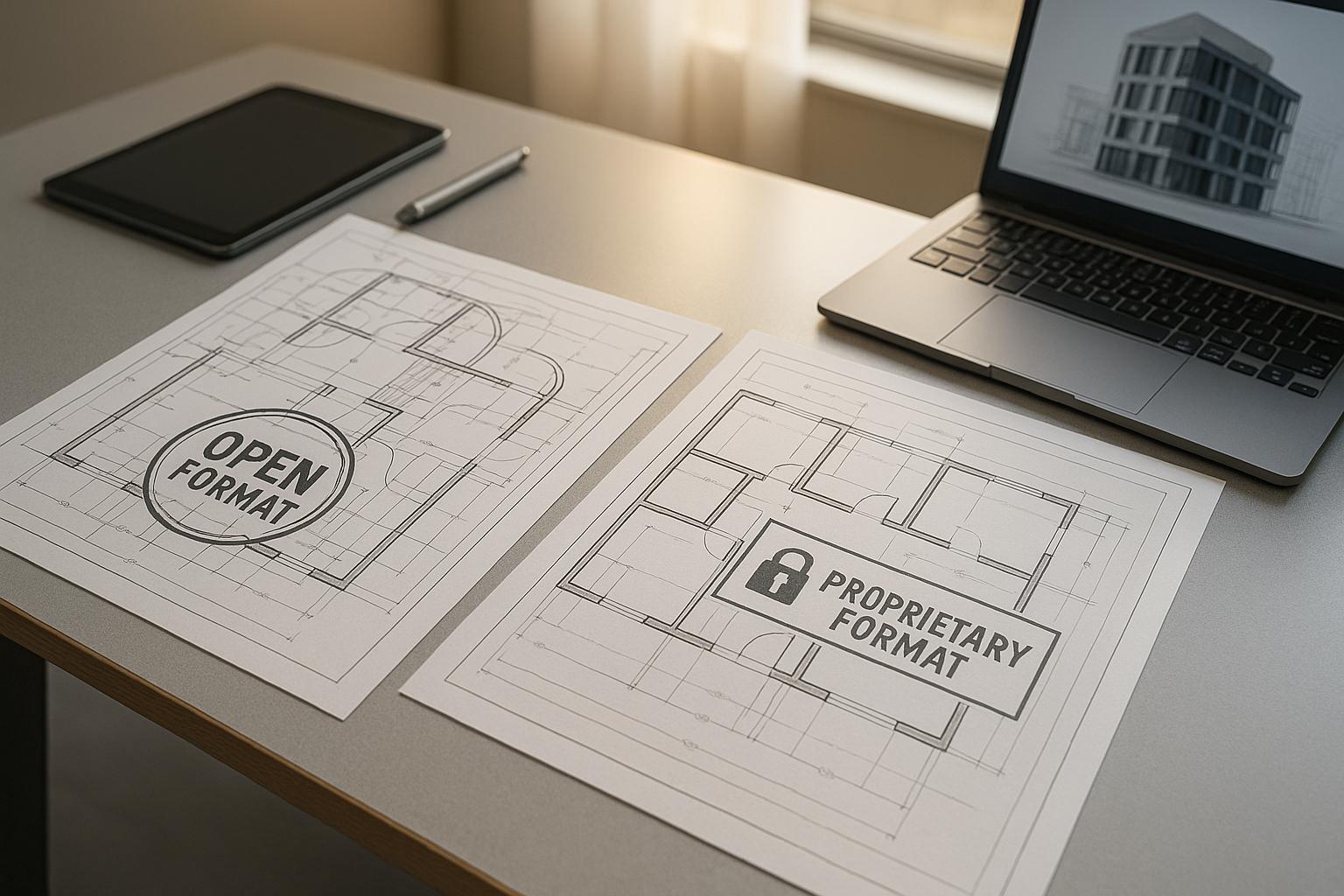Software modernization isn’t optional anymore – it’s essential. Here’s how to tell if your software is outdated and holding your business back:
- Slow Performance: Long load times, frequent crashes, and outdated code can disrupt operations and hurt productivity.
- Growth Limits: Struggles with scaling, integration, or adding new features signal systems built for past needs, not future growth.
- Security Risks: Outdated encryption, missing updates, and non-compliance expose your business to cyber threats.
- User Dissatisfaction: Clunky interfaces, poor mobile responsiveness, and lack of key features frustrate users and drive them away.
- High Maintenance Costs: Legacy systems demand more resources, with over 50% of IT budgets often spent on upkeep.
Quick Fixes: Modernization strategies like cloud migration, microservices, and automation can improve performance, security, and scalability while cutting maintenance costs. Don’t wait – modernize now to stay competitive and secure.
Legacy systems modernization: Best practices & use cases of an application upgrade
1. Slow Performance
Slow software performance can be a huge headache for businesses. When applications lag or crash, especially during busy times, it disrupts operations and can hurt your bottom line.
What Poor Performance Looks Like
There are several ways slow performance shows up in your software. For instance:
- Applications take too long to load, particularly during high-traffic periods.
- Systems crash or throw errors during everyday tasks.
- Older coding languages and outdated architectures can’t keep up with modern hardware, causing bottlenecks.
These issues make it clear that your software is struggling to meet current demands.
How to Fix Performance Issues
One effective solution is cloud migration. Take Pinterest as an example: after moving to AWS, they scaled from 50,000 to 17 million users in just nine months [3]. Modern infrastructure like this can completely transform how your software performs.
Here are some tried-and-true strategies to improve performance:
- Update Your Code: Replace outdated code with modern, efficient programming languages.
- Move to the Cloud: Cloud-based solutions offer scalability and better resource management.
- Optimize Your Architecture: Redesign systems to handle today’s workloads smoothly.
Cloud platforms, in particular, provide automatic scaling, which keeps your software responsive and stable, even during peak usage.
| Performance Metric | Legacy System | After Modernization |
|---|---|---|
| Load Times | Slow during peak hours | 50% faster processing |
| System Stability | Frequent crashes | 90% fewer failures |
| Resource Usage | Inefficient allocation | Dynamic scaling |
2. Growth Limits
Outdated software can become a serious obstacle when your business is ready to scale. Many companies find that older systems, built for past needs, can’t keep up with today’s demands.
Signs Your Growth Is Stuck
Your software might be holding you back if you’re dealing with these issues:
- Resource Bottlenecks: Struggles to handle growing data loads, making scaling a challenge.
- Integration Issues: Inability to connect with modern tools your business relies on.
- Inflexible Design: Adding features or making changes takes too much time and effort.
Research from Tricension highlights that many organizations spend a large chunk of their IT budgets maintaining outdated systems, leaving little room for progress or innovation [5].
How to Break Through Growth Barriers
Netflix serves as a great example. By moving from a monolithic system to microservices and cloud infrastructure, they achieved global scalability and smooth integration with third-party services [1].
Here are a few strategies to modernize your systems and unlock growth:
| Modernization Strategy | Business Benefit |
|---|---|
| Microservices Architecture | Allows independent scaling of parts |
| Cloud Migration | Offers dynamic resource management |
| Containerization | Provides more flexible deployments |
Cloud-Native Solutions: Adopting scalable cloud infrastructure lets you adjust to changing needs automatically. Plus, you only pay for what you use, making scaling more cost-efficient.
Flexible System Design: Shifting to microservices divides your software into smaller, scalable pieces. This makes updates easier and avoids disruptions.
Better Integration: Use APIs to connect your software with essential tools, ensuring smooth communication between systems.
"Modernization isn’t just a technical upgrade – it’s a strategic decision aligned with business goals" [6].
sbb-itb-51b9a02
3. Security Risks
Using outdated software can leave your business open to serious security threats. A stark example is the 2017 WannaCry ransomware attack, which impacted 98% of computers running Windows 7, an operating system no longer supported at the time [9].
Signs Your Security Might Be at Risk
Here are some warning signs that your software could be putting your business in danger:
| Warning Sign | Security Impact |
|---|---|
| Outdated Encryption | Susceptible to modern hacking techniques |
| Missing Security Updates | Vulnerable to known exploits |
| Non-Compliance | Fails to meet current security standards |
| Legacy Authentication | Weak access controls and password policies |
The biggest concern is relying on unsupported software versions. Without regular security patches, these systems are defenseless against new vulnerabilities.
Another common issue is legacy authentication systems that lack features like multi-factor authentication or single sign-on, which are now considered essential. Similarly, outdated encryption methods not only increase risk but could also lead to legal consequences for non-compliance with regulations.
Strengthening Security Through Modernization
More than half of businesses upgrade their legacy systems to improve security [2]. Why? Because modernizing systems brings clear advantages:
- Cloud-Based Security: Modern cloud platforms provide automatic updates, advanced threat detection, and built-in security measures.
- Enhanced Protections: New systems come with real-time threat monitoring, automated patching, stronger encryption, and better access controls.
- Secure Integrations: Modern systems allow for safe API connections, ensuring seamless integration with other critical tools while protecting sensitive data.
"Modernization ensures competitiveness and security in a $24.8 billion market" [9].
Failing to modernize security can lead to severe financial losses and damage to your reputation. Beyond protecting sensitive information, investing in updated systems builds confidence with customers and stakeholders. Security may be a top priority, but ensuring smooth user experiences is just as important for long-term success.
4. User Dissatisfaction
When your software feels clunky, outdated, or lacks crucial features, users notice – and not in a good way. A poor experience can hurt your business by driving customers away and affecting your revenue.
Signs of Unhappy Users
Unhappy users often leave clues. For instance, 88% of users say they’re unlikely to return to a website after a bad experience [4]. This shows how much people now expect modern, responsive designs.
Here are some common warning signs and their effects on your business:
| Warning Sign | Business Impact |
|---|---|
| Increased Support Tickets | Higher costs, frustrated users |
| Declining Engagement | Lost revenue, lower retention |
| Negative Reviews | Damaged reputation |
| High Abandonment Rates | Reduced market share |
Take the legal industry as an example. One company struggled with outdated contract processing software that frustrated users. After updating the system to work seamlessly with their legal and document management tools, they saw a 60% reduction in processing time and cut error rates by 75% [2].
Improving User Experience
Modern software puts users first. Here’s how focusing on the right areas can make a difference:
| Modernization Focus | User Benefits |
|---|---|
| Mobile Responsiveness | Works smoothly on all devices |
| AI-Powered Features | Personalized and efficient workflows |
| Intuitive Interface | Easier to use, boosts productivity |
| Performance Optimization | Faster and smoother interactions |
To enhance your software’s usability:
- Run A/B Tests: Let data guide your decisions on design and features [8].
- Listen to Users: Regularly collect feedback through surveys or interviews.
- Prioritize Mobile: Ensure flawless performance on smartphones and tablets, as mobile continues to dominate [10].
5. High Maintenance Costs
Maintaining legacy systems can quietly drain resources over time. While issues like slow performance and security vulnerabilities signal the need for updates, rising maintenance costs are a clear sign of inefficiency that demands attention.
Signs of Costly Maintenance
| Warning Sign | Business Impact |
|---|---|
| Over 50% of IT Budget on Maintenance | Limits resources for growth and innovation |
| Frequent System Downtime | Leads to lost productivity and revenue |
| Dependence on Manual Intervention | Drives up labor costs and risks human error |
| Compatibility Problems | Requires extra spending on specialized tools or hardware |
For example, a financial services company allocated 75% of its IT budget to maintaining a legacy platform. Constant patches and the need for specialized developers caused their costs to triple compared to industry standards [2].
Reducing Costs with Modern Software
Modern software solutions help cut maintenance expenses by automating processes and improving resource use:
| Modernization Strategy | Cost-Saving Benefits |
|---|---|
| Cloud Migration | Shifts to a pay-as-you-go model, eliminating hardware expenses |
| Automated Testing | Cuts down QA time and catches problems earlier |
| DevOps Practices | Simplifies deployments and updates |
| Microservices Architecture | Makes it easier to maintain and scale individual components |
Here’s how you can lower maintenance costs:
- Automate repetitive tasks and move to cloud-based services to reduce manual work and infrastructure expenses.
- Use DevOps workflows with automated CI/CD pipelines to speed up deployments and boost system reliability [10].
A healthcare provider that upgraded its patient management system reported a 40% drop in yearly maintenance costs. They also eliminated nearly 200 hours of manual updates every month [2].
Conclusion: Preparing Your Software for the Future
Updating your software isn’t just a choice anymore – it’s a must. Ignoring the warning signs can slow down growth, compromise security, and hurt user satisfaction, leaving your business vulnerable to competitors.
Modernizing software boosts efficiency, strengthens security, and scales with ease, helping businesses keep up with changing demands and seize new opportunities.
| Modernization Focus | Business Advantage |
|---|---|
| Cloud Integration | Flexible, scalable, pay-as-you-go model |
| Improved Security | Defense against new cyber threats |
| Better Performance | Happier users and higher retention |
| Automation | Lower costs and fewer mistakes |
| Modern Architecture | Easier adjustments to market shifts |
To get started, evaluate your technical debt, look for security weaknesses, and ensure your software aligns with your business goals. Using tools like cloud computing and automation can help prepare your applications for what’s ahead [7].
"Modernizing legacy applications presents several benefits, including reduced costs, improved performance, enhanced security, scalability, and better user experience" [7].
Start by thoroughly assessing your systems – identify the gaps and figure out where your software falls short. Working with experts in modernization can make this process smoother and ensure your goals are met.
Waiting too long to modernize can lead to higher costs, losing your competitive edge, and missing chances to grow. Acting now lets businesses tackle current problems while opening doors to future opportunities in an ever-changing market.









Leave a Reply